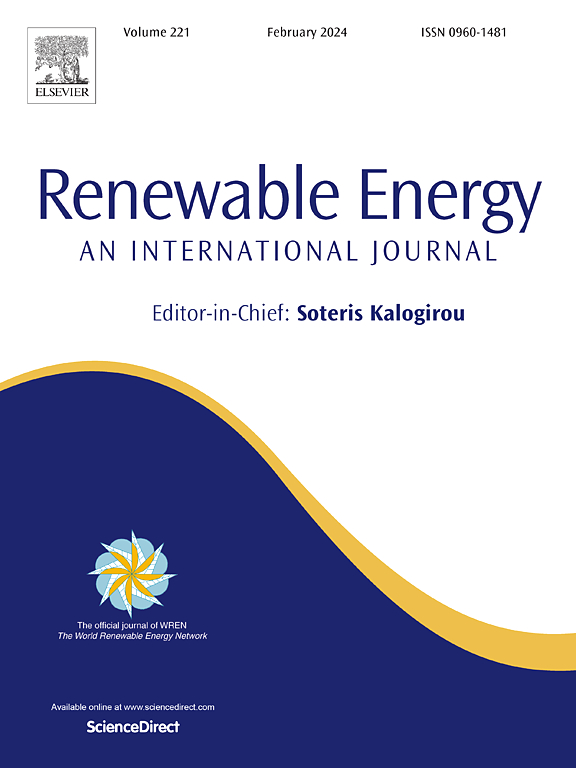Short-term wind power forecast with turning weather based on DBSCAN-RFE-LightGBM
IF 9
1区 工程技术
Q1 ENERGY & FUELS
引用次数: 0
Abstract
At present, the wind power prediction technology is becoming more and more mature, however, the turning weather brings a decrease in prediction accuracy due to its suddenness and instability. In this paper, a wind power prediction method considering the turning period and non-turning period respectively is proposed to weaken the adverse effects caused by turning weather. Firstly, the prediction effects of multiple models are compared, density-based spatial clustering of applications with noise (DBSCAN) is selected as the outlier processing method, recursive feature elimination (RFE) is used as the feature selection method, and Light gradient boosting machine (LightGBM) is used for prediction. The combined prediction method based on DBSCAN-RFE-LightGBM can reduce the influence of abnormal data and redundant features and improve the prediction effect. Then, the sliding window is set to detect the turning period. Considering that the turning weather is an emergency and does not happen frequently, the amount of data is small, which leads to the inability to train the model well. Generative adversarial networks (GAN) are applied to expand the turning period data. The LightGBM is trained and predicted by using the expended turning period data. Finally, the time-division prediction results are merged. Using the data collected from wind farms for short-term power prediction experiments, the time-segment prediction method proposed in this paper with GAN reduces MAE by 1.913 and RMSE by 3.351 on a single unit compared with the non-differentiated period.
基于DBSCAN-RFE-LightGBM的有转向天气的短期风电预报
目前,风电预测技术日趋成熟,但转向天气的突发性和不稳定性使预测精度下降。本文提出了一种分别考虑转向期和非转向期的风电功率预测方法,以减弱转向天气带来的不利影响。首先,比较了多个模型的预测效果,选择基于密度的带噪声应用空间聚类(DBSCAN)作为离群点处理方法,使用递归特征消除(RFE)作为特征选择方法,使用光梯度增强机(LightGBM)进行预测。基于DBSCAN-RFE-LightGBM的组合预测方法可以减少异常数据和冗余特征的影响,提高预测效果。然后,设置滑动窗口来检测转弯周期。考虑到转向天气属于紧急情况,不经常发生,数据量较小,导致无法很好地训练模型。采用生成式对抗网络(GAN)对转弯期数据进行扩展。利用扩展转弯周期数据对LightGBM进行训练和预测。最后,对时分预测结果进行合并。利用风电场短期功率预测实验数据,本文提出的基于GAN的时间段预测方法与非分段时段相比,单机MAE降低1.913,RMSE降低3.351。
本文章由计算机程序翻译,如有差异,请以英文原文为准。
求助全文
约1分钟内获得全文
求助全文
来源期刊

Renewable Energy
工程技术-能源与燃料
CiteScore
18.40
自引率
9.20%
发文量
1955
审稿时长
6.6 months
期刊介绍:
Renewable Energy journal is dedicated to advancing knowledge and disseminating insights on various topics and technologies within renewable energy systems and components. Our mission is to support researchers, engineers, economists, manufacturers, NGOs, associations, and societies in staying updated on new developments in their respective fields and applying alternative energy solutions to current practices.
As an international, multidisciplinary journal in renewable energy engineering and research, we strive to be a premier peer-reviewed platform and a trusted source of original research and reviews in the field of renewable energy. Join us in our endeavor to drive innovation and progress in sustainable energy solutions.
 求助内容:
求助内容: 应助结果提醒方式:
应助结果提醒方式:


